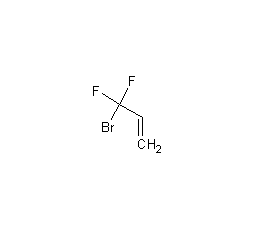carbon tetraiodide


Structural formula
| Business number | 059X |
|---|---|
| Molecular formula | CI4 |
| Molecular weight | 519.63 |
| label |
Tetraiodomethane |
Numbering system
CAS number:507-25-5
MDL number:MFCD00001067
EINECS number:208-068-5
RTECS number:None
BRN number:1733108
PubChem ID:None
Physical property data
1. Characteristics: Undetermined
2. Relative density (20℃, 4℃): 4.23
3. Relative steam density (g/cm3, air=1): Undetermined
4. Melting point (ºC): 170.8
5. Gas phase standard claims heat (enthalpy) (kJ·mol– 1): 267.9
6. Gas phase standard entropy (J·mol-1·K-1): 391.74
7. Gas phase standard free energy of formation (kJ·mol-1): 222.1
8. Gas phase standard hot melt (J·mol-1·K-1): 95.84
9. Specific rotation (º): Undetermined
10. Autoignition point or ignition temperature (ºC): Undetermined
11. Vapor pressure (kPa, 25ºC): Undetermined
12. Saturated vapor pressure (kPa, 60ºC): Undetermined
13. Heat of combustion (KJ/mol): Undetermined
14. Critical temperature (ºC): Undetermined
15. Critical pressure (KPa): Undetermined
p>
16. The logarithmic value of the oil-water (octanol/water) partition coefficient: Undetermined
17. The upper limit of explosion (%, V/V): Undetermined
18. Lower explosion limit (%, V/V): Undetermined
19. Solubility: Undetermined
Toxicological data
None yet
Ecological data
This substance may be harmful to the environment, and special attention should be paid to water bodies.
Molecular structure data
1. Molar refractive index: 58.52
2. Molar volume (cm3/mol): 120.3
3. Isotonic specific volume (90.2K ): 362.9
4. Surface tension (dyne/cm): 82.6
5. Polarizability (10-24cm3): 23.20
Compute chemical data
1. Reference value for hydrophobic parameter calculation (XlogP): 3.3
2. Number of hydrogen bond donors: 0
3. Number of hydrogen bond acceptors: 0
4. Number of rotatable chemical bonds: 0
5. Number of tautomers: None
6. Topological molecule polar surface area 0
7. Number of heavy atoms: 5
8. Surface charge: 0
9. Complexity: 19.1
10. Number of isotope atoms: 0
11. Determine the number of atomic stereocenters: 0
12. Uncertain number of atomic stereocenters: 0
13. Determine the chemical bond configuration.Number of ��centers: 0
14. Number of uncertain chemical bond stereocenters: 0
15. Number of covalent bond units: 1
Properties and stability
Use and store according to specifications, no decomposition will occur, and avoid contact with oxides
Storage method
Stored at 2-8°C in a cool, dry, well-ventilated warehouse. Keep away from fire and heat sources. Protect from direct sunlight. The packaging is sealed. They should be stored separately from acids and food chemicals, and avoid mixed storage. Suitable materials should be available in the storage area to contain spills.
Synthesis method
It is prepared by heating carbon tetrachloride and carbon disulfide in the presence of aluminum triiodide (AlI3); it can also be prepared by reacting iodoform with potassium hypoiodite.
Purpose
for organic synthesis









